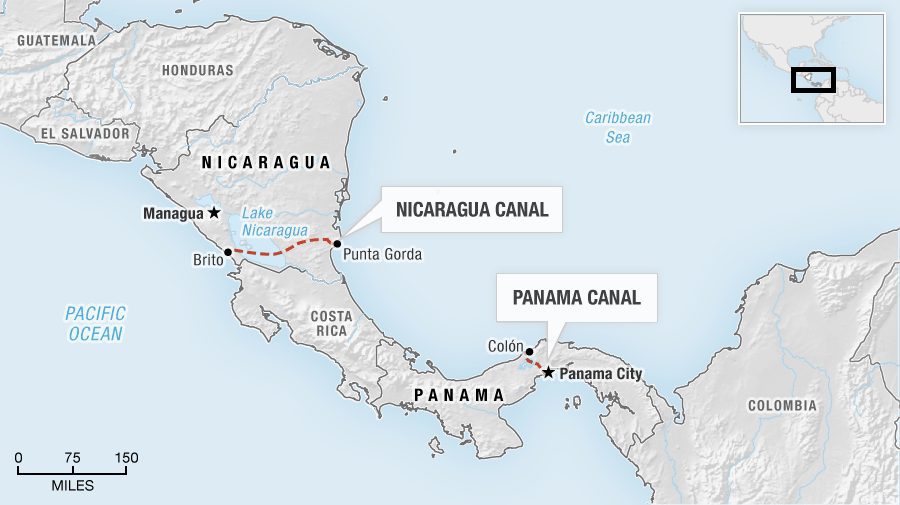
Nicaragua, The Panama Canal and a 1-Cent Stamp
Nicaraguan officials and a Chinese company recently announced that they have broken ground on the $50 billion transoceanic waterway that they predict will rival the Panama Canal.
Historians offer Nicaragua advice – don’t print any more stamps or coins showing the previous historical beauty of the nation, as the Chinese company may change its mind. A previous Nicaragua 1-cent stamp changed the fate of two nations and the most important construction project in world history.
In the 1870’s, a French company began construction of a canal in the Panama region of Columbia. Yellow fever and errors brought the entire French project into bankruptcy. In 1901, newly installed President Theodore Roosevelt now wanted an American canal as it meant “international power with rapid deployment of the fleet.”
To Senate Leader Mark Hanna, “The canal meant America becoming a commercial world power with our products in shorter shipping distance from both coasts.” Although longer, Nicaragua, with a better climate and terrain, was the favored route and all the millions invested in the French project were to be lost forever. The American Canal Commission, Senate and Congress declared Nicaragua the approved route.

According to historian Henry F. Pringle (Theodore Roosevelt), two key players in this saga were Bunau-Varilla, a French entrepreneur, who came to America to promote the sale of the French rights to the Panama Canal, and William Nelson Cromwell, an influential New York attorney. Bunau-Varilla and Cromwell “approached Hanna to promote the Panama route.”
Fate now took over. Bunau-Varilla had pointed out the danger of a possible volcanic eruption in Nicaragua. Nicaragua had chosen a volcano,Mt. Monotombo depicted in full eruption, on its 1- cent stamp to characterize the beauty of the country. On May 6 1902, a volcanic eruption of Mt. Pelee destroyed an island in the Caribbean.
“Eight days later, on the eve of the final Senate debate for approval of the Nicaraguan route, Mt. Monotombo in Nicaragua also erupted.” Bunau-Varilla called every local stamp dealer. He then mounted 90 such stamps, one for each Senator, with the added words, “An official witness of the volcanic activity of Nicaragua.”
That was all Hanna needed. On June 25, 1902, Congress approved the Panama route. Cromwell obtained $40,000,000 for his clients. Buneau-Varilla (and nature) had performed a miracle. I recently obtained a current Nicaragua coin, which proudly displays the beauty of the country. You guessed it – Mt. Monotombo in full eruption.






